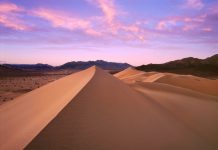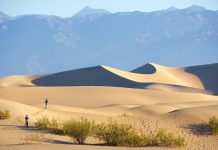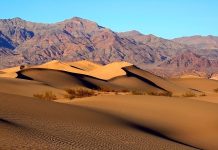
How to Travel in the Desert: A Comprehensive Guide
Traveling in the desert can be an extraordinary adventure, but it requires careful preparation and knowledge of desert conditions. Here’s a detailed guide to help you navigate this unique environment safely and enjoyably:
Essential Preparations
- Water Supply: Bring plenty of water as dehydration is the leading cause of death in deserts. The hot, dry air accelerates water loss from your body1. Calculate at least 1 gallon (3.8 liters) per person per day.
- Proper Clothing: Wear loose, light-colored clothing that covers your skin to protect from sunburn while allowing ventilation. Include a wide-brimmed hat and UV-protection sunglasses.
- Navigation Tools: Carry detailed maps, a compass, and GPS devices as desert landscapes can be disorienting with few landmarks.
During Your Desert Journey
- Timing Your Travel: Plan activities for early morning or late afternoon to avoid peak heat hours (10am-4pm). The temperature difference between day and night can be extreme, sometimes exceeding 50°C (122°F) during the day and dropping below freezing at night.
- Transportation Choices:
- 4WD vehicles are ideal for navigating sandy terrain
- Camel riding offers a traditional experience – though initially uncomfortable, you’ll adapt to their rhythmic movement
- Environmental Awareness:
- Learn about the desert’s unique ecosystem from local guides
- Observe how plants and animals have adapted to survive in these harsh conditions
Safety Considerations
- Recognize Danger Signs: Watch for symptoms of heat stroke (dizziness, nausea, headache) and dehydration (dark urine, fatigue).
- Shelter from Elements: Carry materials for emergency shade and know how to create shelter using natural formations if needed.
- Weather Awareness: Be prepared for sudden sandstorms which can reduce visibility dramatically.
Unique Desert Experiences
- Stargazing: With minimal light pollution, desert nights offer spectacular views of the Milky Way. Many travelers find camping under the stars a highlight.
- Cultural Connections: Engage with local communities to learn traditional survival techniques and desert lore.
- Photography: Capture the dramatic landscapes, from vast sand dunes to unique rock formations.
Remember that deserts cover about one-fifth of Earth’s land surface and come in different types: subtropical (most common), cold, coastal, and rain shadow deserts. Each presents unique challenges and rewards for travelers.
The Sahara Desert, the world’s largest hot desert spanning several North African countries, exemplifies the beauty and harshness of these environments with its expansive dunes and extreme temperatures. Whether you’re exploring the Sahara or other deserts, proper preparation will help transform this challenging environment into an unforgettable adventure.
















